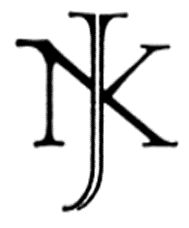 On Failure: Error and Defeat in Netherlandish Art, 1500-now.
On Failure: Error and Defeat in Netherlandish Art, 1500-now.
The seventeenth century has long been understood as a period of extraordinary economic growth and cultural, scientific and geographic expansion, a model for success that once was given the title of Golden Age. To foreign visitors, the Dutch were typical nation builders brimming with optimism, which was manifested in portraits of ambitious burghers, landscapes showing land reclamation, and seascapes featuring victorious war fleet These are some of the ways in which people articulated success. The question we aim to address in this volume is how failure was understood and dealt with. Particular instances of early modern stagnation and decline in the Low Countries, such as the tulip craze and floodings, have been well-researched. Personal failures, such as entrepreneurial fiascos, bankruptcy, rotting crops, or expulsion from guilds, cities or social circles have been less well-documented. How was disappointment and distress expressed and visualized in periods of rise as well as of fall?
Narratives of failure have remained largely unexplored in art historical literature, partly due to an emphasis on (male) genius, perfection and masterpiece in early modern art theory. Recently, the concept of a ‘golden age’ as such has been identified as failing. In addition, the paradoxical notion of ‘heroic failure’ has been applied to doomed arctic explorations. Our volume intends to expose the failures within a period of prosperity, as well as explore how images articulated a deeply felt anxiety of a failing society, ecology, or economy. Whereas art historical literature tends to have a strong focus on growth, prospect and potential, this volume would like to shift the perspective to moments of incapacity, folly and disappointment.
Failure has a distinct temporality. While success stories tend to unfold along an orderly, linear course, narratives of failure imply a more faltering trajectory implicit in the Latin word “errare,” meaning both to wander and to err. In contemporary art, failure has become a recurrent theme in art production. In what ways have failures impacted earlier art? When do we speak of artistic failure regarding a work or a career? How can a faltering, cyclical or meandering concept of time give a better understanding of historical developments more generally? Downfall can spark entire new industries, as was the case when iconoclasm inspired new genres or Delftware resulted from the collapse of the China trade. Did calls for reform in religion, art and law that failed to come to fruition still have an impact on history’s course?
Whereas this volume starts from the long seventeenth century in order to map out the wandering paths of failure against the dominant narrative of success, we welcome contributions on failures in Netherlandish art history from c. 1500 to the present day. We are also interested in essays taking a more conceptual approach that may include questions such as: To what extent can failure be productive (for instance in experimentation), or even successful? How do failures effect political ideas and notions of nation-building? What role does it play in the perception of history, for instance in the eighteenth- or nineteenth-century vision of the rise and fall of the Dutch Republic?
The NKJ is dedicated to a particular theme each year and promotes innovative scholarship and articles that employ a diversity of approaches to the study of Netherlandish art in its wider context. For more information, see https://brill.com/view/serial/NKJ
Contributions to the NKJ are limited to a maximum of 7,500 words, excluding notes and bibliography. Following a peer review process and receipt of the complete text, the editorial board will make a final decision on the acceptance of a paper.
Please send a 500-word abstract and short CV by March 15th, 2024 to all volume editors:
Stijn Bussels, s.p.m.bussels@hum.leidenuniv.nl
Hanneke Grootenboer, a.j.s.grootenboer@uva.nl
Joost Keizer, joost.keizer@rug.nl
Natasha Seaman, nseaman@ric.edu
Schedule of production:
- Deadline for submission of abstracts: March 15th, 2024
- Notifications about abstracts: April 2024
- Submission of full articles for peer review: November 1st, 2024
- Decision on acceptance based on peer reviews: December 2024
- Deadline revised articles June 1st, 2025
- Final articles, including illustrations & copyrights: September 1st, 2025
- Publication: early 2026